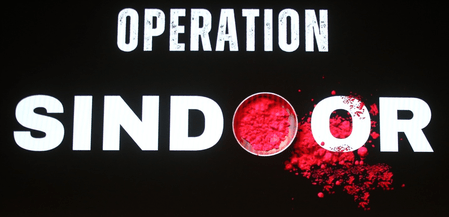
China accused of orchestrating disinformation campaign after Operation Sindoor: US congressional report
Washington, Nov 18 (IANS) China masterminded an extensive disinformation campaign following India’s Operation Sindoor, deploying fake social media accounts and AI-generated imagery to influence global defense perceptions and boost its own weapons sales, according to the US-China Economic and Security Review Commission’s (USCC) annual report to Congress.
The congressional advisory body said Beijing used “fake social media accounts to propagate AI images of supposed ‘debris’ from planes” in an attempt to undermine the credibility of French Rafale jets and promote China’s domestically developed J-35 fighters. The report characterized this as part of China’s expanding gray zone toolkit—covert, non-military tactics designed to shape public opinion and geopolitical outcomes.
The Commission further alleged that China “opportunistically” exploited the India-Pakistan conflict in May to market the sophistication of its weapons systems. It said this effort served dual purposes: reinforcing China’s narrative advantage in the context of its ongoing border standoff with India and advancing its broader ambitions to become a leading global defense exporter.
Operation Sindoor was launched by India in retaliation for the April Pahalgam terror attack that killed 26 civilians. India struck several Pakistani military and terror-linked targets. In August, Indian Air Force Chief Air Chief Marshal AP Singh confirmed that Indian forces destroyed five Pakistani fighter jets and a large airborne surveillance aircraft during the operation.
On broader India-China relations, the USCC report described a deep “asymmetry” in how the two countries approach the border issue. According to the Commission, China frequently leverages high-profile diplomatic engagements to create an appearance of progress while attempting to compartmentalize the border dispute from other areas of bilateral cooperation, such as trade and investment. India, by contrast, insists on a sustainable and comprehensive resolution before moving forward in other domains.
The report also warned that the eventual succession of the Dalai Lama is likely to become a major flashpoint between the two Asian powers, given China’s intent to assert authority over the process and India’s longstanding hosting of the Tibetan spiritual leader.
Despite several rounds of meetings, including Prime Minister Narendra Modi’s visit to China for the Shanghai Cooperation Organisation (SCO) Summit earlier this year, the Commission said most agreements remain “largely conceptual,” with few concrete steps announced.
The report added that India’s diplomatic outreach to Beijing in 2025 may have been partly influenced by tensions in India-US trade negotiations following the imposition of 50 percent tariffs. However, relations between Washington and New Delhi have since stabilized, with the first tranche of a new trade agreement expected soon.